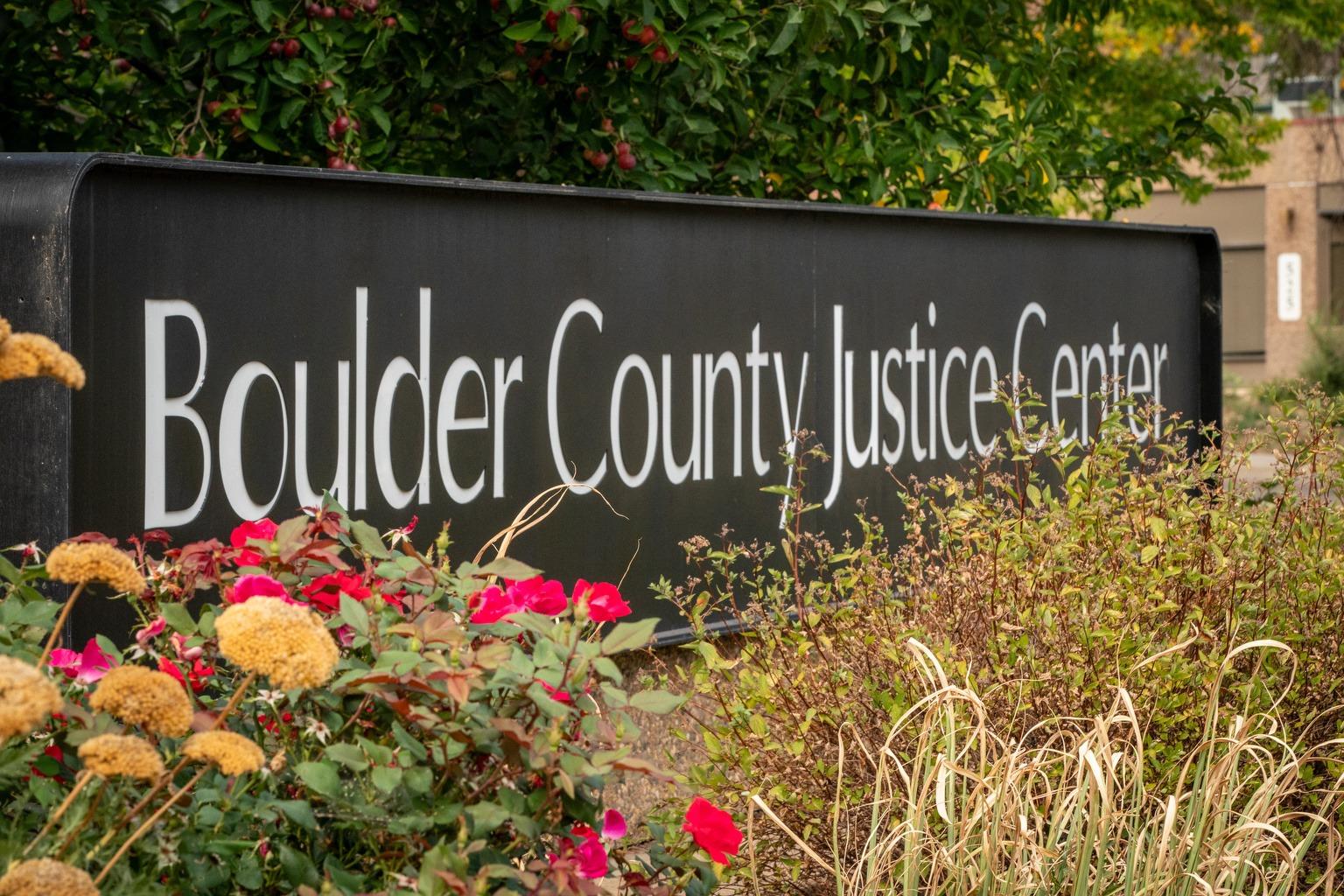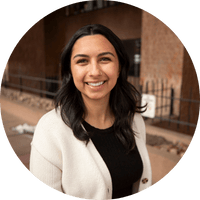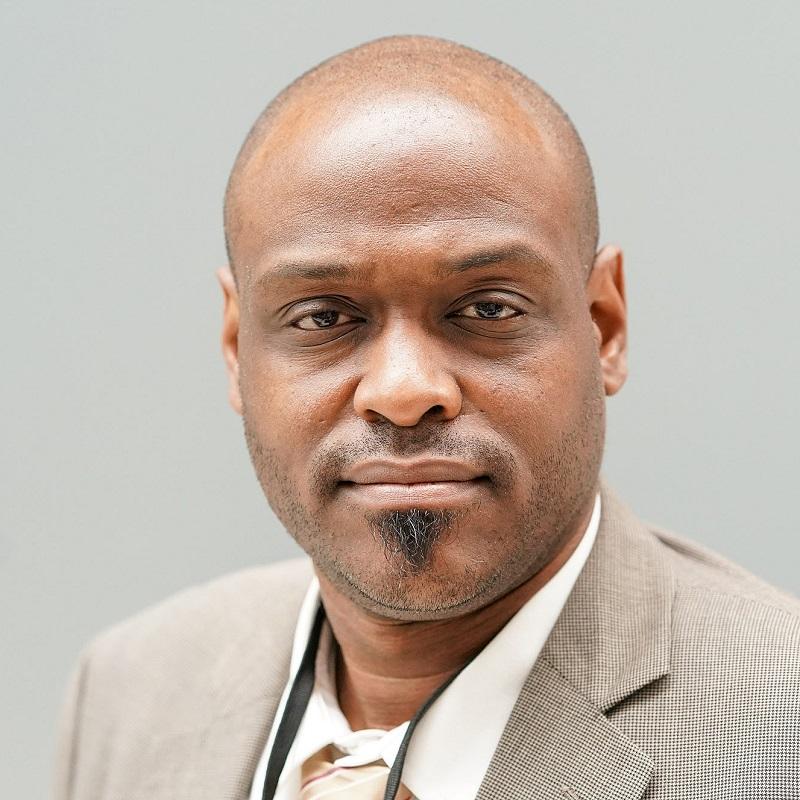
On a clear, autumn morning in early November, Lewis TallBull took a handful of men through a gate at Daniels Park, a Denver Mountain Park in Douglas County.
One held a rifle against his shoulder.
Denver has kept a few dozen bison — known as buffalo in Native communities — on the ridge overlooking the city skyline since 1938. More than 150 attendees watched as the group approached a pen holding a 600-pound bull. Once it arrived, TallBull’s nephew leveled the gun atop the fence, his sight focused just below the bison’s horns.

A few minutes passed before a gunshot echoed across the park and nearby suburbs. As the bison slumped into the dirt, the crowd celebrated with a chorus of war cries and approached the site of the dying buffalo.
The annual harvest event is organized by the TallBull Memorial Council, an organization founded by Lewis TallBull’s late grandfather, Richard TallBull.
A committed activist and Southern Cheyenne Tribe member who moved from Oklahoma to Denver, the elder TallBull worked with the city to preserve a space at Daniels Park for ceremonies and powwows in 1974. Almost fifty years later, the city began allowing the group to slaughter one of the park’s bison each fall, then process it onsite into meat, nutritional supplements and ceremonial objects.
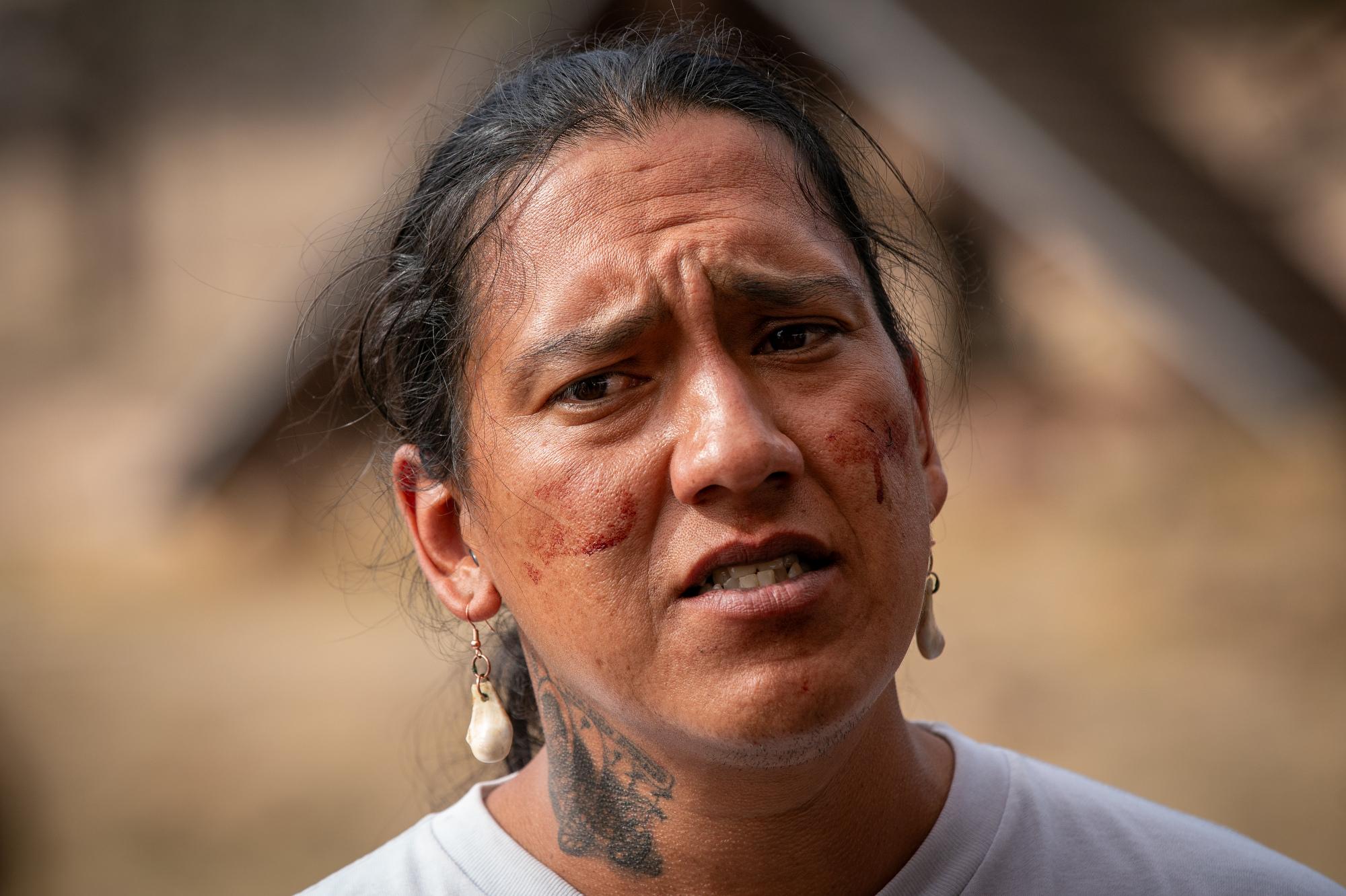
Similar ritual harvests are common on reservations. Many tribal nations keep bison to restore a species that white settlers pushed to the brink of extinction in the 19th century in an attempt to snuff out their communities. Modern herds also offer a reliable food source. During the recent federal government shutdown, for example, some tribal governments slaughtered bison to make up for partial cuts to food benefit programs.
Even though census data show nearly three-quarters of American Indians live in urban areas, TallBull said the cultural and nutritional benefits offered by bison aren’t accessible in most cities.
“That's what we're doing,” TallBull said. “We're bringing these traditional ways and these bison harvests that only happen on reservations to the inner-city, urban communities.”
A new role for Denver’s bison
Those annual events are also part of a broader shift for Denver’s historic bison herds.
Obtained from Yellowstone National Park, the city originally kept the animals corralled in City Park as a Wild West novelty.
A Rocky Mountain News article reported the city added five bison purchased from the Flathead Indian Reservation in northwest Montana in 1904. By supplementing its herd, the city sought to ensure that Eastern tourists “will no longer be disappointed at not finding the famous beasts in Colorado — the home of the buffalo.”
The city moved the animals to nearby foothills and plains in the early 20th century. Today, it manages roughly 70 bison in Genesee Park and Daniels Park, part of the city’s unique and far-flung mountain park system.
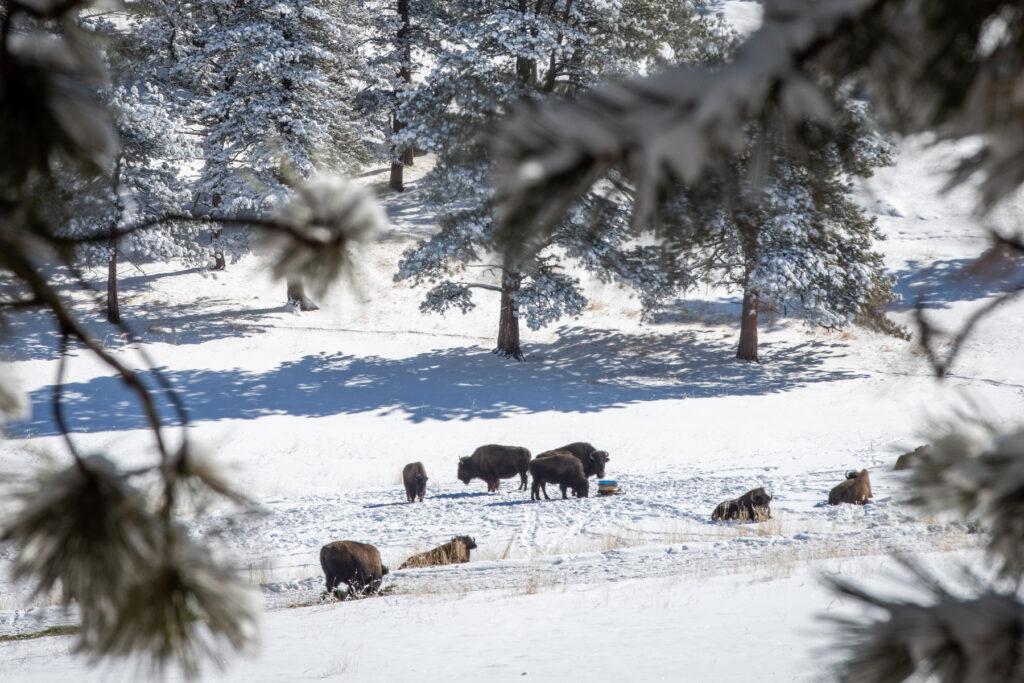
Since the city has limited grazing space, Denver historically held an annual calf sale to control its herd. The public auctions were open to ranchers or anyone else interested in the city’s bison, said Ryan Philian, a Denver Mountain Parks ranger who manages the Daniels Park herd.
“You could have come out and bought a baby bison,” Phillian said.
The city began to shift its strategy a few years ago. In 2018, the TallBull Memorial Council held its first annual bison harvest at Daniels Park.
In 2021, the city held its last auction and passed an ordinance to transfer any excess bison to tribes and nonprofits. It has since donated or transferred 140 bison to tribal governments and Indigenous-led organizations, according to Stephanie Figueroa, a spokesperson for Denver Parks and Recreation.
Many of those transfers were arranged by the InterTribal Buffalo Council, an organization formed to facilitate buffalo management across tribal lands. Michael “Bo” Vacu, the group’s executive director, said he’s glad Denver’s buffalo can benefit tribal governments and local Native residents.
“No matter what with buffalo, it’s always a circle,” Vacu said. “Once upon a time, buffalo roamed free in Colorado, and were a major food source for tribes in the area. That they’re back in Denver and feeding Native Americans again, it’s just amazing."
Using bison to affirm Native identity
TallBull has tried to make the annual bison harvest as traditional as possible. At the moment, however, he said working with the city means continuing to allow some modern equipment.
After attendees paid their respects to the bison and shared sips of its blood, a front loader arrived to carry the animal to a tarp laid next to a nearby barn. Participants arranged chairs in a circle around the area to watch volunteers take it apart. The butchering process generally takes six to eight hours and yields enough meat for more than 150 people, according to Lewis TallBull.

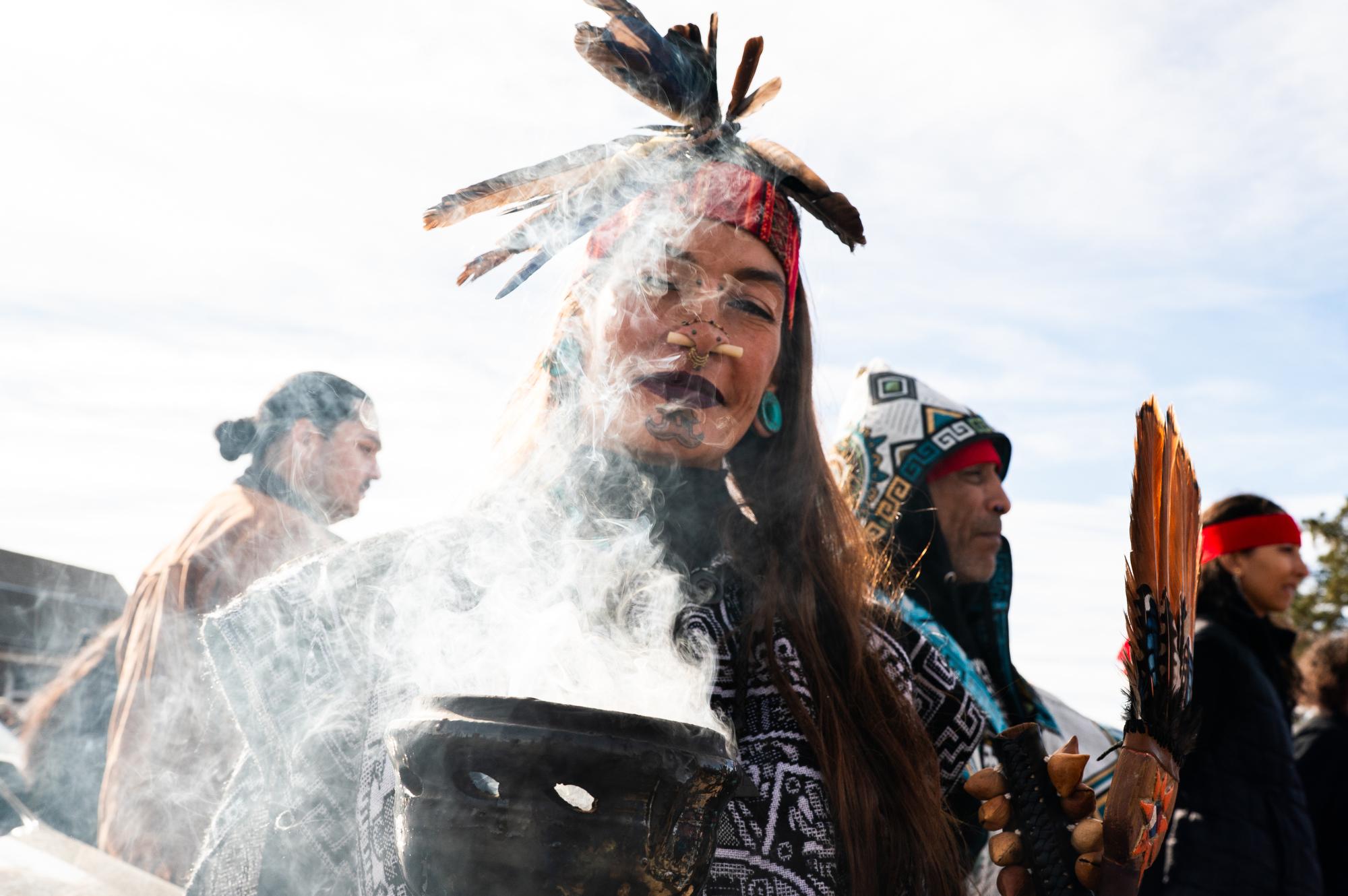
Nine-year-old Malcolm Sanchez didn’t want to miss out on the action. He joined a group working to separate the hide, using a knife to reveal layers of fat and lean muscle. The experience left him excited for the bison stew his mom makes in a slow cooker after every harvest. “It's so good,” Sanchez said.
Along with many other people at the event, Sanchez said his family lacks a direct link to a single tribe. He only knows that part of its ancestry includes the Pueblo people of northern New Mexico.
“I don’t know the rest of them because my family’s like a big mix,” Sanchez said.
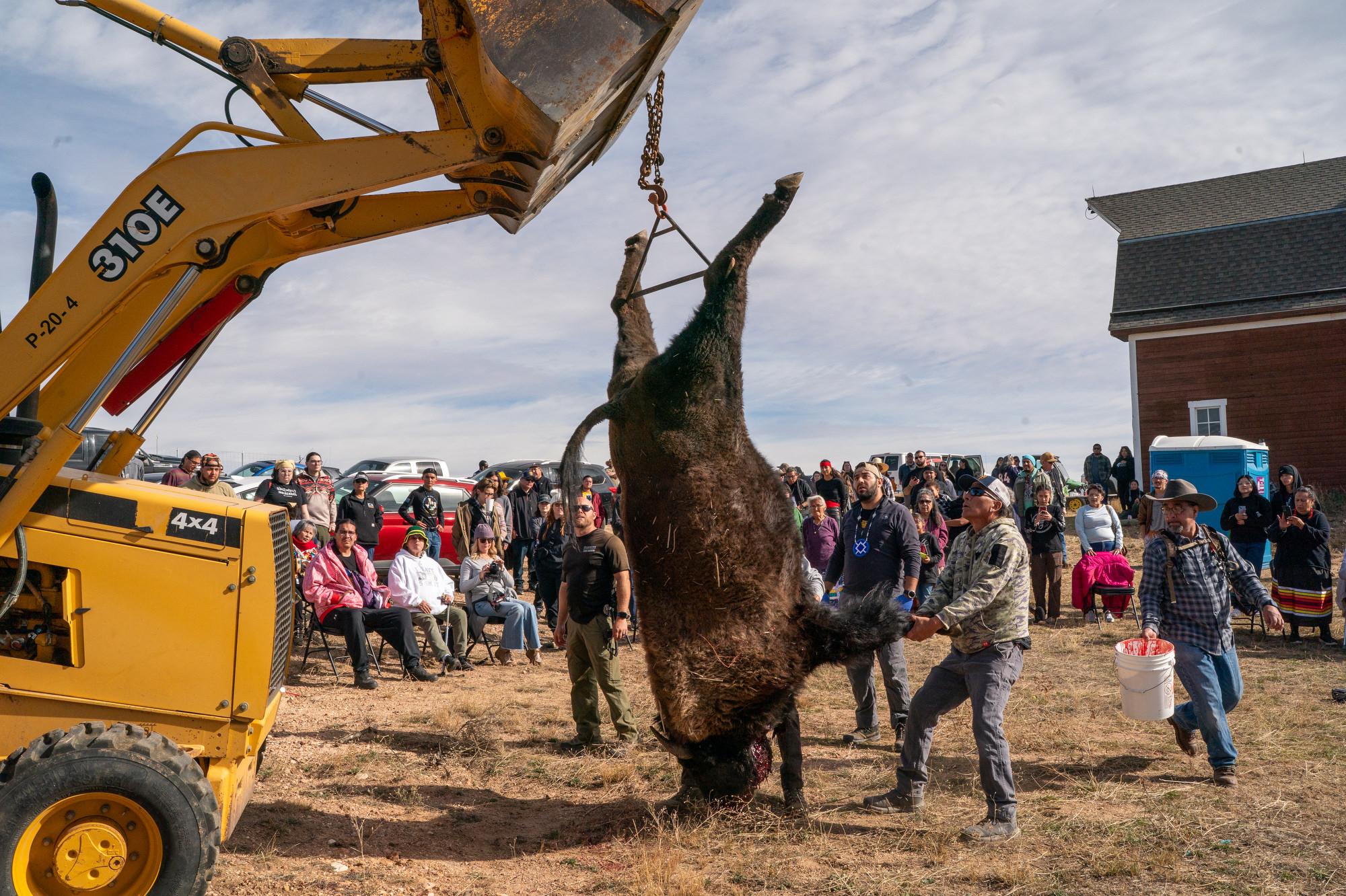
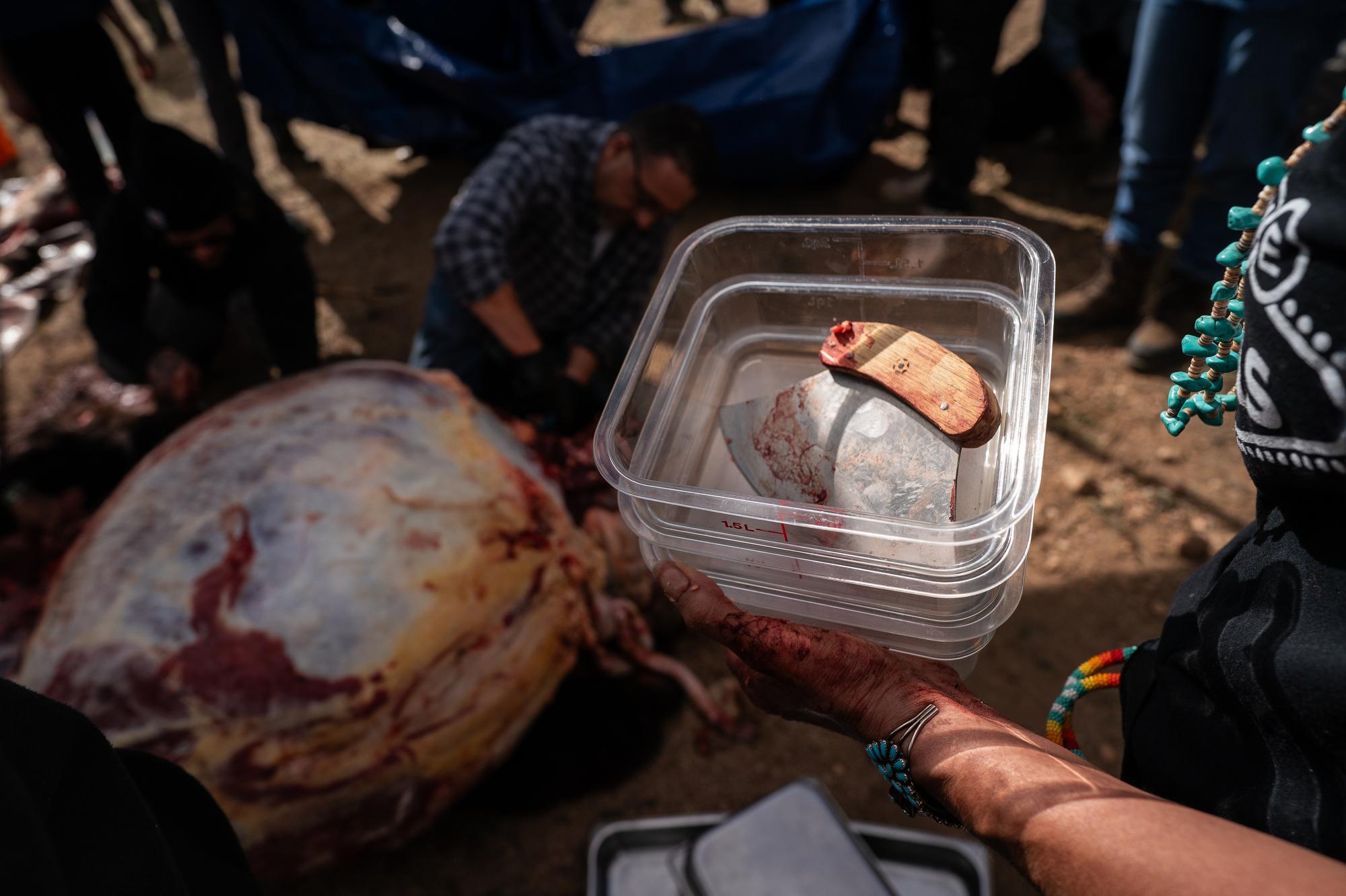
TallBull said that’s common in Denver — a city known as a crossroads for different Native people. His grandfather, for example, moved to Denver from the Southern Cheyenne and Arapaho Tribes in Oklahoma in the 1960s.
Editor's note: The following section contains a graphic image depicting an animal's slaughter that may be disturbing to some readers.
While he’s grateful to have such a clear heritage, he knows other Denver residents are working to reclaim their Native identities. He’s glad the city has recognized its bison can play a small role in the process.
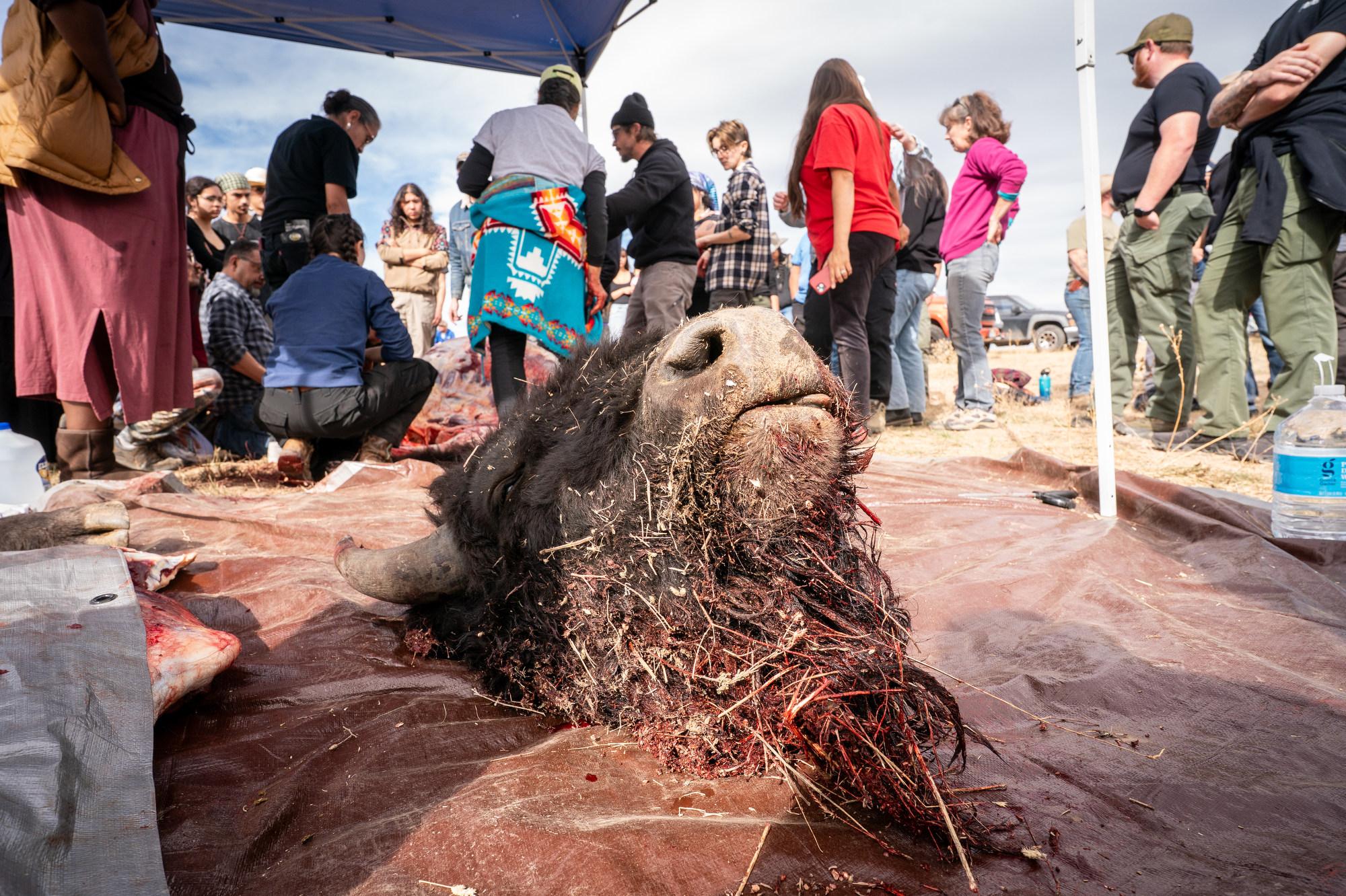
TallBull hopes to soon organize multiple harvests annually through Sacred Returns, an organization he co-founded with his wife, Esther Perez. The pair hopes to gain additional buffalo through the city and possibly private ranching operations.
“Reestablishing our identity as Indian people, one percent each day is good enough,” TallBull said. “This right here is a huge step for us. And I think there’s only more to come.”
The goal isn’t only to help more Native residents enjoy bison meat from ritual harvests. He said it's meant to help bison recall their own heritage: not as emblems of the Old West, but as food and cultural sustenance for native people.



